
NGC 1, also occasionally referred to as GC 1, UGC 57, PGC 564 or Holm 2a is an intermediate spiral galaxy of the morphological type Sbc, located approximately 210 to 215 million light-years from the Solar System in the constellation Pegasus. It was discovered on 30 September 1861 by Heinrich d'Arrest.
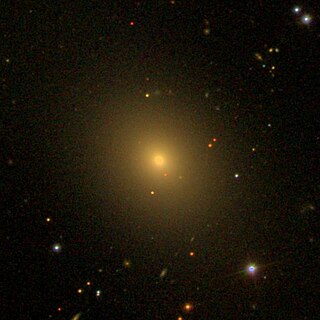
NGC 57 is an elliptical galaxy in the constellation Pisces. It was discovered on 8 October 1784 by astronomer William Herschel.

NGC 1851 is a relatively massive globular cluster located in the southern constellation of Columba. Astronomer John Dreyer described it as not very bright but very large, round, well resolved, and clearly consisting of stars. It is located 39.5 kilolight-years from the Sun, and 54.1 kilolight-years from the Galactic Center. The cluster is following a highly eccentric orbit through the galaxy, with an eccentricity of about 0.7.

NGC 114 is a barred lenticular galaxy located in the constellation Cetus. It was discovered by American astronomer Truman Henry Safford on September 23, 1867. The galaxy lies approximately 195 million light-years from Earth, and is about 55,000 light-years in diameter, nearly half the size of the Milky Way.
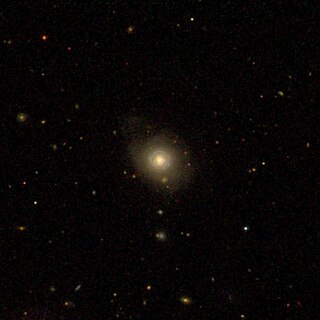
NGC 118 is a spiral galaxy of type S(rs)a? pec with an apparent magnitude of 13.6 located in the constellation Cetus. It was discovered on September 23, 1867 by the astronomer Truman Safford.

NGC 124 is a spiral galaxy in the constellation Cetus. It was discovered by Truman Henry Safford on September 23, 1867. The galaxy was described as "very faint, large, diffuse, 2 faint stars to northwest" by John Louis Emil Dreyer, the compiler of the New General Catalogue.

NGC 128 is a lenticular galaxy in the constellation Pisces. It is approximately 190 million light-years from the Sun and has a diameter of about 165,000 light-years.

NGC 183 is an elliptical galaxy located in the constellation Andromeda. It was discovered on November 5, 1866 by Truman Safford.

NGC 237 is a spiral galaxy located in the constellation Cetus. It was discovered on September 27, 1867 by Truman Safford.
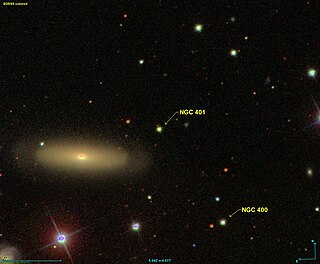
NGC 400 is a star located in the constellation of Pisces. It was discovered on December 30, 1866 by Robert Ball.

NGC 401 is a star located in the constellation of Pisces. It was discovered on December 30, 1866 by Robert Ball.
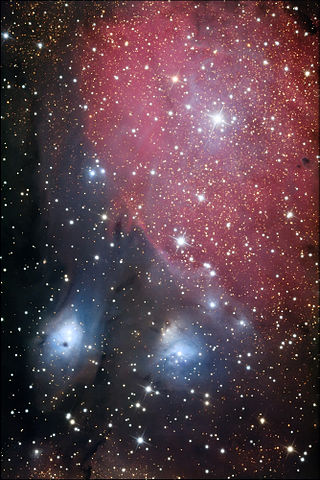
NGC 6589 is a reflection nebula located in the constellation of Sagittarius, and it was discovered by Truman Safford on August 28, 1867. In August 1905, Edward Barnard listed it as IC 4690.

NGC 397 is a lenticular galaxy located in the constellation Pisces. It was discovered on December 6, 1866 by Robert Ball. It was described by Dreyer as "extremely faint, small, round, very faint star to west."

NGC 425 is a spiral galaxy in the constellation of Andromeda. It was discovered on 29 October 1866 by Truman Safford.
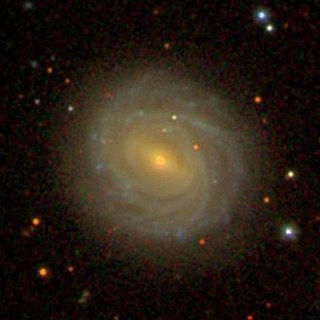
NGC 7056 is a barred spiral galaxy located about 225 million light-years away in the constellation of Pegasus. NGC 7056 was discovered by astronomer Albert Marth on September 17, 1863. It was then rediscovered by astronomer Truman Henry Safford on September 29, 1866.
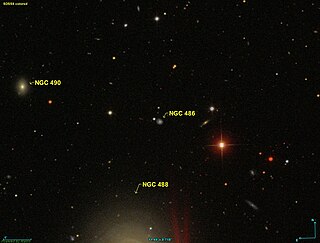
NGC 486, also occasionally referred to as LEDA 1281966 or GC 275, is a spiral galaxy in the constellation Pisces. NGC 486 was discovered on December 6, 1850 by Irish engineer Bindon Blood Stoney.

NGC 490, also occasionally referred to as PGC 4973 or GC 277, is a lenticular galaxy in the constellation Pisces. It is located approximately 85 million light-years from Earth and was discovered on December 6, 1850, by Irish engineer Bindon Blood Stoney. Although John Dreyer, creator of the New General Catalogue, credits the discovery to astronomer William Parsons, he notes that many of his claimed discoveries were made by one of his assistants. In the case of NGC 490, the discovery was made by Bindon Stoney, who discovered it along with NGC 486, NGC 492 and NGC 500 during his observation of NGC 488.

NGC 492, also occasionally referred to as PGC 4976 or GC 280, is a barred spiral galaxy in the constellation Pisces. It is located approximately 590 million light-years from Earth and was discovered on December 6, 1850 by Irish engineer Bindon Blood Stoney. Although John Dreyer, creator of the New General Catalogue, credits the discovery to astronomer William Parsons, 3rd Earl of Rosse, he notes that many of his claimed discoveries were made by one of his assistants. In the case of NGC 492, the discovery was made by Bindon Stoney, who discovered it along with NGC 486, NGC 490 and NGC 500 during his observation of NGC 488 using Lord Rosse's 72" telescope.
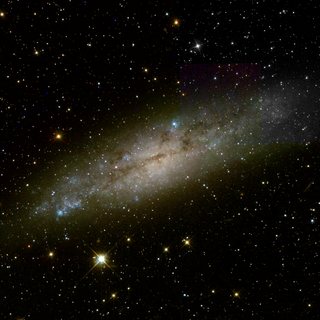
NGC 1892 is a spiral galaxy in the constellation Dorado. It was discovered November 30, 1834 by John Herschel.
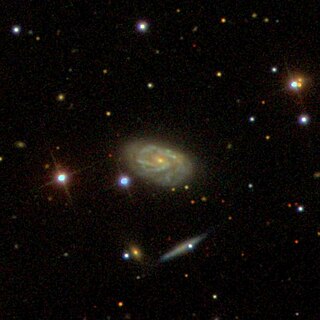
NGC 769 is a spiral galaxy located in the constellation Triangulum about 197 million light years from the Milky Way. It was discovered by the American astronomer Truman Safford in 1866.



















